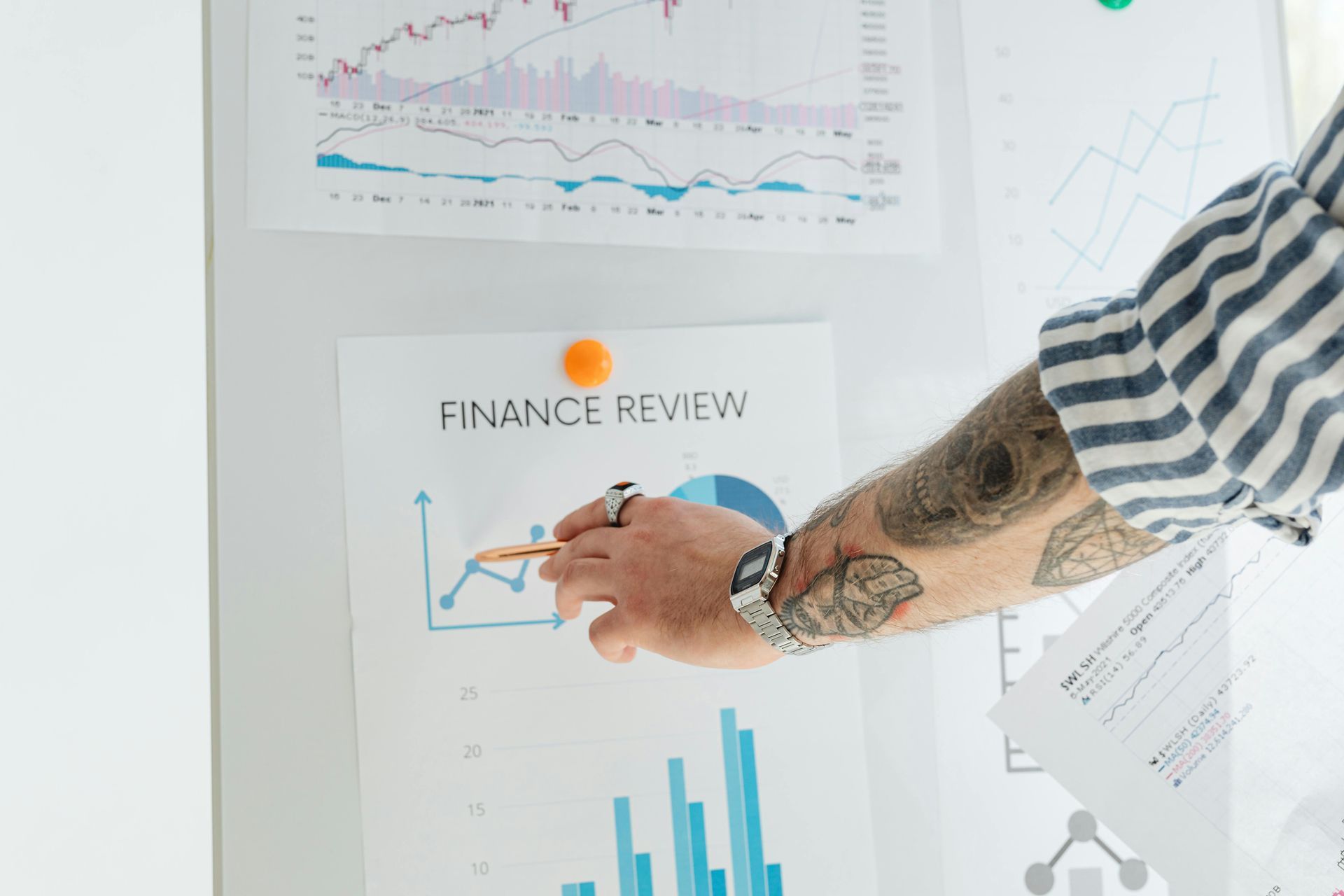In the world of marketing and sales, conversions are the holy grail. Whether it’s getting someone to make a purchase, subscribe to a newsletter, or click on a call-to-action, the ultimate goal is to drive action. But why do people buy? What compels them to choose one product over another, or trust one brand over the countless alternatives?
The answer lies in the intricate and fascinating world of psychology. Conversions aren’t just about offering the best price or the most features. They’re about understanding what motivates people at their core. By tapping into human emotions, building trust, and creating a seamless experience, you can unlock true conversion power.
Let’s dive into the psychology behind why people buy and how you can apply these insights to drive meaningful action.

The Emotional Basis of Buying Decisions
Contrary to popular belief, buying decisions are rarely purely logical. In fact, studies show that up to 95% of our decision-making happens subconsciously. Emotions play a massive role in influencing behavior, and understanding this can transform the way you approach conversions.
1. Trust as a Fundamental Driver
People buy from brands they trust. Trust is built through consistency, transparency, and reliability. When customers feel confident in your brand, they’re more likely to convert.
How to Build Trust:
- Social Proof: Showcase testimonials, reviews, and case studies to demonstrate that others trust you.
- Transparency: Be clear about pricing, policies, and processes. Hidden fees or unclear terms can erode trust.
- Reliability: Ensure your website is functional, secure, and professional. Even minor issues, like broken links or slow load times, can create doubt.
2. The Power of Belonging
Humans are inherently social creatures. We crave connection and belonging, and this extends to the brands we choose. Customers are more likely to convert when they feel a sense of alignment with your brand values or community.
How to Foster Belonging:
- Inclusive Messaging: Use language and imagery that resonate with your target audience and make them feel included.
- Community Building: Create spaces where customers can interact, such as forums, social media groups, or live events.
- Storytelling: Share stories that reflect your audience’s experiences and values, creating a deeper emotional connection.
3. FOMO (Fear of Missing Out)
FOMO is a powerful psychological trigger. The fear of losing an opportunity or being left out drives urgency and compels action.
How to Leverage FOMO:
- Limited-Time Offers: Use phrases like “Only 3 left in stock” or “Sale ends tonight” to create urgency.
- Exclusive Deals: Highlight offers that are “just for members” or “by invitation only.”
- Real-Time Activity: Display live notifications, such as “10 people are viewing this product now,” to emphasize demand.
Simplifying the Path to Conversion
Once you’ve captured a customer’s interest, the next step is ensuring a seamless path to conversion. Confusion, friction, or unnecessary steps can derail even the most motivated buyer.
1. Streamline the User Experience
A cluttered or confusing website can frustrate potential customers and lead to abandonment.
Tips for a Better User Experience:
- Clear Navigation: Ensure customers can easily find what they’re looking for.
- Intuitive Design: Use a clean layout, clear calls-to-action (CTAs), and mobile-friendly design.
- Simplified Checkout: Minimize the number of steps required to complete a purchase. Offer guest checkout options to reduce friction.
2. Personalization Matters
People want to feel seen and understood. Personalized experiences show customers that you’re paying attention to their needs and preferences.
How to Personalize the Experience:
- Dynamic Content: Tailor website banners, product recommendations, and emails based on customer behavior and interests.
- Segmented Messaging: Group your audience based on demographics, behaviors, or purchase history, and create targeted campaigns for each segment.
- Behavioral Triggers: Use abandoned cart emails or reminders for products viewed to re-engage potential buyers.
3. Reduce Decision Fatigue
Too many options can overwhelm customers, leading to indecision. Simplifying choices can make it easier for customers to act.
How to Simplify Decisions:
- Highlight Best Sellers: Use labels like “Most Popular” or “Editor’s Choice” to guide customers.
- Bundle Options: Offer curated packages or bundles to reduce the need for individual decisions.
- Comparison Tools: Provide side-by-side comparisons to help customers evaluate their options quickly.
The Role of Cognitive Biases in Conversions
Cognitive biases are mental shortcuts that influence how we perceive and act on information. Understanding these biases can help you craft strategies that resonate with your audience.
1. Anchoring Bias
Customers rely heavily on the first piece of information they see when making decisions. This is known as the anchoring effect.
How to Use Anchoring:
- Display the original price next to a discounted price to highlight savings.
- Showcase premium options first to make other options appear more affordable.
2. Social Proof
People tend to follow the actions of others, especially in uncertain situations.
How to Use Social Proof:
- Highlight customer reviews, ratings, and testimonials prominently on your website.
- Display usage statistics like “Over 1,000,000 satisfied customers” or “Trusted by 500+ businesses worldwide.”
- Use influencer endorsements or partnerships to validate your brand’s credibility.
3. Reciprocity
When someone gives us something, we feel compelled to return the favor. This principle can drive conversions by creating a sense of obligation.
How to Use Reciprocity:
- Offer free resources like ebooks, guides, or trials to build goodwill.
- Provide small gifts or discounts to encourage future purchases.
- Deliver exceptional customer service to foster loyalty and repeat business.
Crafting the Perfect Call-to-Action (CTA)
Your call-to-action is the final step in converting interest into action. A weak or unclear CTA can derail an otherwise successful interaction.
Characteristics of a Strong CTA:
- Clarity: Be direct about what you want the customer to do (e.g., “Sign Up Now” or “Get Started Today”).
- Urgency: Create a sense of time sensitivity with phrases like “Limited Time Offer” or “Act Now.”
- Value: Highlight the benefit of taking action (e.g., “Save 20%” or “Unlock Exclusive Access”).
- Visibility: Place your CTA prominently on the page and use contrasting colors to make it stand out.
Case Study: Emotional Triggers in Action
To illustrate the power of psychology in driving conversions, let’s look at a real-world example.
The Scenario:
A fitness brand wanted to increase sign-ups for its online workout program. Their initial landing page focused on features like “20+ workouts” and “expert trainers.” While informative, it wasn’t converting as expected.
The Solution:
The brand revamped its messaging to focus on emotional triggers:
- Trust: Highlighted testimonials from real users who achieved transformative results.
- Belonging: Positioned the program as a supportive community of like-minded individuals.
- Urgency: Added a countdown timer for a limited-time discount.
The new page emphasized outcomes rather than features: “Feel stronger, more confident, and part of a community that has your back.” As a result, sign-ups increased by 40% in just one month.
Final Thoughts: Unlocking Conversion Power
Conversions are about more than just driving traffic or offering discounts. They’re about understanding and connecting with your audience on a deeper level. By leveraging the psychology of trust, emotion, and simplicity, you can create experiences that resonate and compel action.
💡 Remember:
- Trust is earned through transparency and reliability.
- Emotions drive decisions, so connect with your audience’s values and aspirations.
- A seamless, intuitive experience makes it easy for customers to say yes.
Conversions aren’t a mystery—they’re a science. Use these insights to unlock your true potential and turn interest into meaningful action.



All rights reserved © 2004-2024 Proshark • Privacy Policy • Messaging Policy • Terms of Service • Advertising TOU




